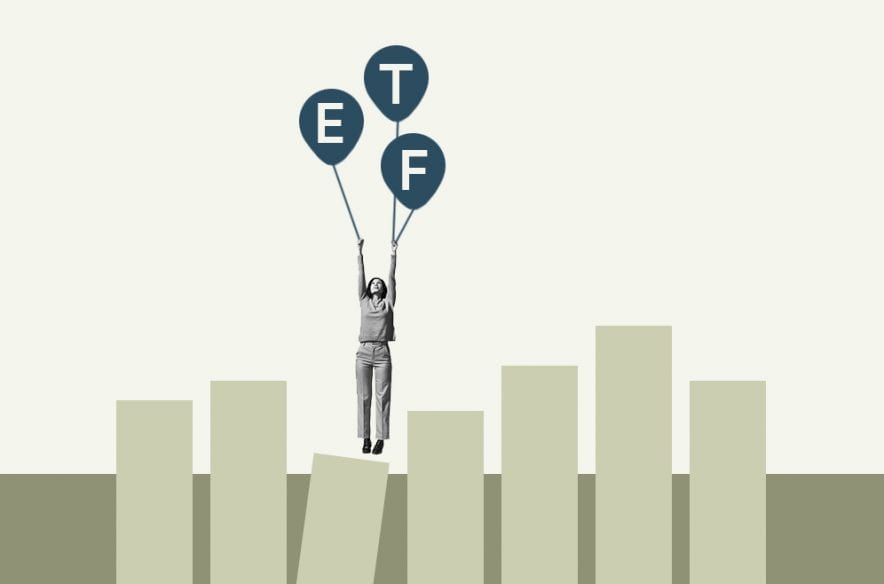Exchange-traded funds (ETFs) are meant to replicate an index, such as the S&P 500, without actively participating in the market. The most cost-effective ETFs to buy are those with the lowest expense ratios. One of the most significant benefits of index-based mutual funds and exchange-traded funds (ETFs) is that they have lower fees. Before purchasing the appropriate funds for their requirements, investors should have a clear understanding of the fees and expenditures associated with ETFs.
Expense Ratios and the Functional Organization of ETF Fees
When doing research or seeking information on exchange-traded funds or mutual funds, the cost ratio is one of the first pieces of information that should be looked for. A management fee is a charge that is taken from the assets of the fund at a rate that is expressed as a percentage. Fees are withdrawn from exchange-traded funds (as well as mutual funds) to cover the expenses of management and operations of the fund. This implies that they will likewise be deducted from the money you make. When the costs are lower, you get to retain a greater percentage of your allocated portion of the fund's overall earnings. When compared to their investing relatives, mutual funds and exchange-traded funds (ETFs) often have cheaper fees and other charges.One Illustration of How Fees on ETFs Are Deducted
In the case of an exchange-traded fund (ETF) or a mutual fund, an expense ratio of 0.50 percent indicates that the fund's expenditures amount to 0.50 percent of the assets under the management of the fund. On a yearly basis, the management business of the investment fund would take a deduction equal to one-half of one percent from the assets of the fund. You would end up with the whole return of the ETF after deducting the associated costs. If the overall return on the fund for the year (before expenditures) is 10.00 percent, and the expense ratio is 0.50 percent, then your net return on the fund (after expenses) would be 9.50 percent. The expenditures for a fund with an expense ratio of 0.50 percent are $5 for every $1,000 that is invested in the fund.Why Fees on ETFs Are Important
Since most ETFs are managed in a passive manner, their cost ratios are often far lower than those of most mutual funds. There is no need for a fund manager to do research, provide analysis, or execute transactions since ETFs simply replicate the performance of a benchmark index. When these expensive operations are eliminated, the fund's operational expenses will be reduced because of this. A mutual fund that is actively managed, on the other hand, incurs more operating expenses, which results in higher fees. Generally speaking, expenditure ratios for mutual funds will fall somewhere in a range from 0.50 percent to 2.00 percent. On the other hand, the fees associated with ETFs may be as little as 0.05 percent or as high as almost 1.00 percent. The expense ratios of the lowest-cost index mutual funds are often higher than those of the lowest-cost exchange-traded funds (ETFs). For instance, one of the exchange-traded funds (ETFs) that is traded the most often is the SPDR S&P 500. (SPY). It just has an expenditure ratio of 0.0945 percent, which is quite low. The S&P 500 index fund (SPY) has a 10-year annualized return of 13.74 percent as of September 30, 2020. The Growth Fund of America (AGHTX), which has an expense ratio of 0.64 percent, is a well- known actively managed mutual fund that has assets that are comparable to those of other funds. Through October 31, 2020, AGHTX had an annualized return of 13.26 percent, looking back over the last 10 years. If you had placed your money in AGHTX, you would not only have made less than you would have with the same amount invested in SPY, but you also would have seen a greater percentage of your return go toward fees.ETF Fees and the Search for the Very Best Funds
It is not always the case that the exchange-traded funds (ETFs) with the lowest costs are the most advantageous investments. Always do your research and look at the competition before investing in an ETF. Make sure, for instance, that the exchange-traded funds (ETFs) you are contrasting follow the same index. Additionally, looking at the performance history and overall assets might be helpful. It is essential to do an in-depth analysis of the fund's overall assets. Greater liquidity is often associated with larger assets. This may have an effect on the performance of an ETF, particularly in the short term. ETFs that have a greater asset base is often considered to be safer investments than those that have a significantly smaller asset base. Fees of zero percent on some funds chosen by investors are becoming more common at some of the top brokerage firms. For instance, Fidelity Investments provides the market with the zero percent funds listed below:- Large Company Index Fund offered by Fidelity (FNILX)
- Zero Extended Market Index Fund offered by Fidelity (FZIPX)
- Zero Total Market Index Fund offered by Fidelity (FZROX)
- The fund invest in Fidelity® ZERO International Index (FZILX)If you want to invest in more than one fund, you should investigate the holdings of each of those funds to ensure that there will be as little overlap as possible. This will assist you in diversifying your assets and preventing you from being too dependent on a single stock.Before deciding which exchange-traded funds (ETFs) to invest in, savvy investors do extensive research and make comparisons regarding fee ratios. When comparing exchange-traded funds (ETFs) that follow the same index, the one that has the lowest cost ratio is often the best option to go with.


